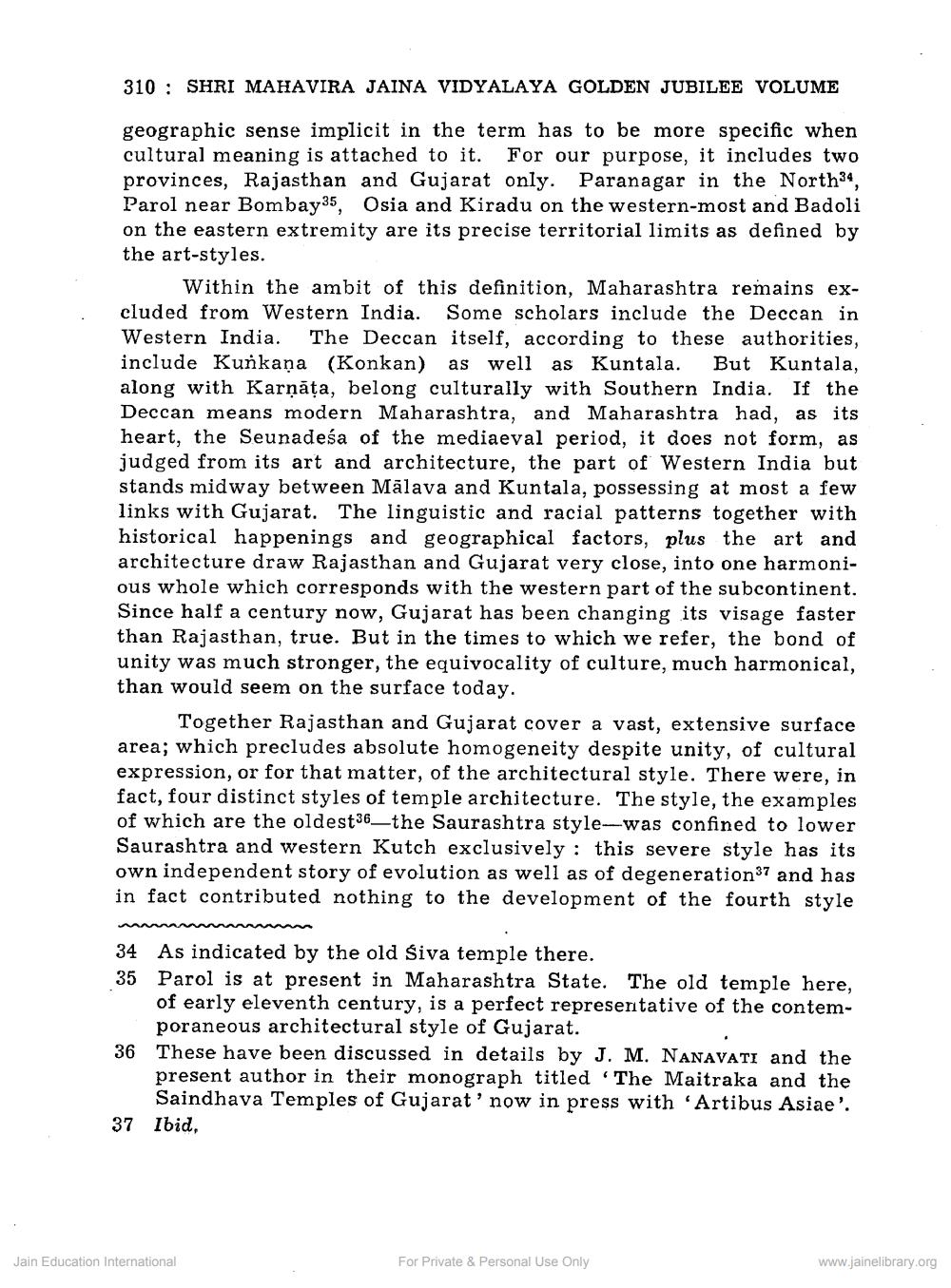________________
310 : SHRI MAHAVIRA JAINA VIDYALAYA GOLDEN JUBILEE VOLUME
geographic sense implicit in the term has to be more specific when cultural meaning is attached to it. For our purpose, it includes two provinces, Rajasthan and Gujarat only. Paranagar in the North34, Parol near Bombay35, Osia and Kiradu on the western-most and Badoli on the eastern extremity are its precise territorial limits as defined by the art-styles.
Within the ambit of this definition, Maharashtra remains excluded from Western India. Some scholars include the Deccan in Western India. The Deccan itself, according to these authorities, include Kunkana (Konkan) as well as Kuntala. But Kuntala, along with Karņāța, belong culturally with Southern India. If the Deccan means modern Maharashtra, and Maharashtra had, as its heart, the Seunadeśa of the mediaeval period, it does not form, as judged from its art and architecture, the part of Western India but stands midway between Mālava and Kuntala, possessing at most a few links with Gujarat. The linguistic and racial patterns together with historical happenings and geographical factors, plus the art and architecture draw Rajasthan and Gujarat very close, into one harmonious whole which corresponds with the western part of the subcontinent. Since half a century now, Gujarat has been changing its visage faster than Rajasthan, true. But in the times to which we refer, the bond of unity was much stronger, the equivocality of culture, much harmonical, than would seem on the surface today.
Together Rajasthan and Gujarat cover a vast, extensive surface area; which precludes absolute homogeneity despite unity, of cultural expression, or for that matter, of the architectural style. There were, in fact, four distinct styles of temple architecture. The style, the examples of which are the oldest36_the Saurashtra style-was confined to lower Saurashtra and western Kutch exclusively : this severe style has its own independent story of evolution as well as of degeneration37 and has in fact contributed nothing to the development of the fourth style
34 As indicated by the old Śiva temple there. 35 Parol is at present in Maharashtra State. The old temple here,
of early eleventh century, is a perfect representative of the contem
poraneous architectural style of Gujarat. 36 These have been discussed in details by J. M. NANAVATI and the
present author in their monograph titled The Maitraka and the
Saindhava Temples of Gujarat' now in press with 'Artibus Asiae'. 37 Ibid,
Jain Education International
For Private & Personal Use Only
www.jainelibrary.org




